Fossil shrinkage crack patterns
Shrinkage of bulk materials appears in two different ways: In
the simplest case, a shrinking chunk of matter becomes smaller, which
is the very meaning of "shrink". Harder to imagine is shrinkage without
size reduction, with the surface kept fixed, which gives rise to
shrinkage stress. Most often reality is between these limits.
If the stress exceeds the strength of the
material, cracks may arise. Usually the material is anisotropic, as
wood, and the stress and strength, too, are anisotropic. Considering
that stress and strain are quantities made up of 6 components each, and
elasticity, which interrelates stress
and strain,
is a material property with up to 21 components, and there are
multi-parameter non-elastic material properties, too, and the set of
numbers describing the mechanical situation may vary throughout the
material, and the cracks feel each other's presence via local
stress fields, one need not wonder why the cracks arrange
themselves in configurations which most often are not easily understood. What
seems to be certain is that wide cracks had formed in an early stage when
the matter was still soft but very narrow ones had formed in an advanced
state of mineralisation. (Narrow cracks may become wider near the
surface afterwards, as explained in Fossil
Wood News 16 in
connection with Fig.4 there.)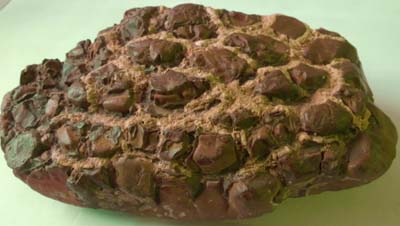
Widely known because often
pictured are the crack networks with polygonal meshes. The 3D-structure
can be columnar, as with the conspicuous
more or less regular basalt columns, or not columnar but irregularly polyhedral,
as in Fig.1, or something in between.
Fig.1 (right):
Fragment of a septarian boulder, also known as turtle stone, with
smooth surface below and
a 3D-network of wide cracks dividing the shrunken matter into
irregular polyhedra.
Carboniferous limestone (?), Gullane beach, East Lothian, Scotland. Width
25cm.
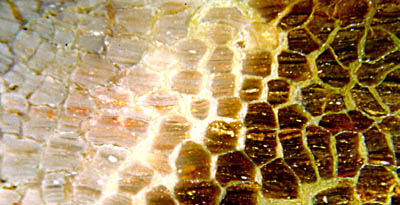
Fig.2 (left): Shrinkage cracks in silicified peat with variable
coupling
to the peat texture: along and perpendicular to the layers on the left
but unrelated to the layers on the right. Cut face of Lower Permian
chert, Döhlen basin, Germany.
The
crack pattern may show preferential directions, depending on the
anisotropy of strength. The cracks on
the left part of Fig.2 obviously preferred the
easy paths of weak strength
along the peat layers. Secondary cracks across the layers came later.
(The same sequence of crack formation is seen in wood misinterpreted as
charcoal, there Fig.5.) On the right, the peat was
virtually isotropic, as a result of
either advanced decay or
advanced silicification.
Shrinkage cracks in wood which did not take the easy way with the grain (see example) indicate that there must have been shrinkage stress whose anisotropy was higher than the anisotropy of strength.
Shrinkage
cracks standing by their own, without the shrunken matter in between, are
seen in Fig.3. Apparently they had formed as a local phenomenon during
an early stage of the silicification of wood which had been degraded such that it had lost its anisotropy. The cracks became
filled with silica and were left over while the shrunken wood vanished
for reasons unknown.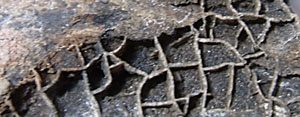
Fig.3: Silica casts of shrinkage cracks formed
in degraded wood, seen on a fracture face of Lower Permian
petrified wood, Döhlen basin, Germany. Width of the picture 4cm.
In
view of a variety of shrinkage crack phenomena occurring before,
during, and
after mineralisation, one need not try to explain some of them as
fossil charcoal as done at
the Naturkunde Museum Chemnitz [1]. The crack pattern on the stem
surface in Fig.4 resembles that one in Fig.1, and the inside is divided
into separate fragments by
shrinkage
cracks similar to those in Figs.1,2,3. Also it could not be explained
how a whole tree trunk would turn into a neat arrangement of thousands
of separate pieces of charcoal (Fig.5) without collapsing into a loose
heap or going up in smoke and ashes. (See Fossil
Wood News 9.) Similar
structures are interpreted as charcoal in [2].
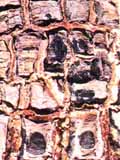

Figs.4,5: Detail of a
fossil tree trunk surface (far left) and section allegedly consisting of silicified charcoal, after [1],
Bild 449, 450.
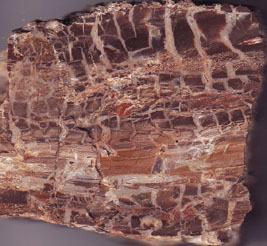 Addendum 2013:
Fig.6 (right): Shrinkage cracks in degraded wood in chert from Döhlen basin. Width of the picture 5cm.
Addendum 2013:
Fig.6 (right): Shrinkage cracks in degraded wood in chert from Döhlen basin. Width of the picture 5cm.
The compressed wood seen in Fig.6 as a constituent of silicified peat
has formed wide shrinkage cracks during an early stage of
silicification, similar to those in Figs.4,5, which may serve as
another argument against the interpretation of fossil wood with wide cracks as fossil charcoal.
Addendum 2015:
After stubbornly ignoring the plain facts presented to them repeatedly
for about ten years, the authors [1,2] have changed their mind and do
no more propagate the silly charcoal interpretation favoured at the Naturkunde-Museum
Chemnitz, where a charred recent tree trunk has been shown for
comparison, meant to support the notion of silicified charcoal. Now
they offer the old interpretation as shrinkage cracks in decaying wood
as if it were a new idea. (For references see Fossil
Wood News 9.)
H.-J.
Weiss 2012, completed 2013, 2015
[1] R.
Rössler: Der versteinerte Wald von Chemnitz. Museum
für Naturkunde Chemnitz, 2001, 179.
[2] R.
Noll, V. Wilde : Conifers from the „Uplands“
– Petrified wood from Central Germany,
in: U. Dernbach, W.D. Tidwell :
Secrets
of Petrified Plants, D'ORO Publ., 2002, 88-103
|

|
 17 17 |

 17
17




 Addendum 2013:
Fig.6 (right): Shrinkage cracks in degraded wood in chert from Döhlen basin. Width of the picture 5cm.
Addendum 2013:
Fig.6 (right): Shrinkage cracks in degraded wood in chert from Döhlen basin. Width of the picture 5cm.
 17
17